Over the last few years, I’ve played with subscription apps and downloadable field guides, and they all definitely have their place. But these are the four apps I recommend most often to people who ask how they can learn more about the natural world around them.
All of these apps are reliable, well maintained, science-based, accessible with most smartphones, don’t require paid subscriptions or other in-app purchases, and offer opportunities to contribute to the collection of field data. Two you can use without registering or revealing any personal information.
All four apps are also applicable beyond North America and suitable for engaging with nature wherever you find it— pristine or even semi-pristine natural areas not required. You can use these apps to ID plants growing in cracks on city sidewalks, or insects and birds in shrubs and brush, as well as species found in city, state and national parks and protected areas, as well as true wilderness areas.
If you have your own go-to favorite apps, please leave them in the comments. And stay safe out there.
-
Seek (by iNaturalist)
Available on iOS + Android
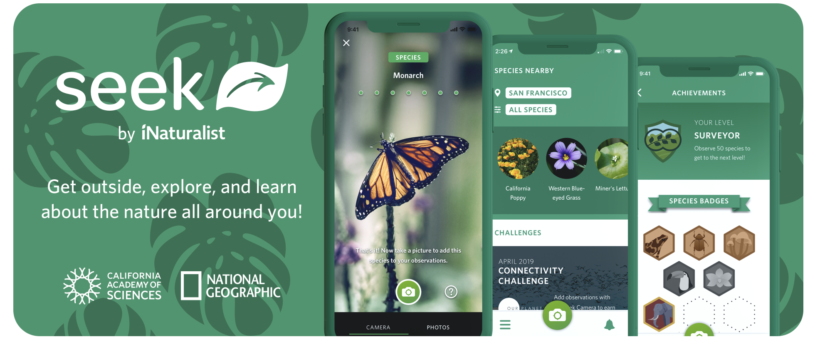
I love this app. It is hands down my most recommended nature app for friends asking for ways to up their knowledge and enjoyment of urban, suburban and wilderness nature exploration.
Want to know what that plant is growing in a sidewalk crack in your neighborhood? Snap a quick image with the app and odds are Seek can identify it for you. I’ve used the app to ID a spider on a friend’s dock (dark fishing spider), a fat green beetle that found its way into my house (eastern Hercules beetle), and the plant that my dog always seems to want to roll in (cat mint, go figure). Be warned though, Seek can be very addicting. That goes double if you’re exploring with children. You’re likely to learn all kinds of new things, but your mileage—if you’re going for distance—will definitely suffer.
A collaboration between iNaturalist, the California Academy of Sciences and National Geographic, having Seek in your pocket can be like traveling with experts in nature identification, from plants to insects, mammals, birds and even fungi!
As noted on the Seek blog, “The species included in Seek are based entirely on photos and identifications made by the global iNaturalist community, so the Seek camera will work best in places where there is already an active community of iNaturalist users, and for species that are easily identified from photos. Unlike iNaturalist, findings made with Seek will not be shared publicly, making it safe for children to use.”
-
iNaturalist
Available on iOS + Android
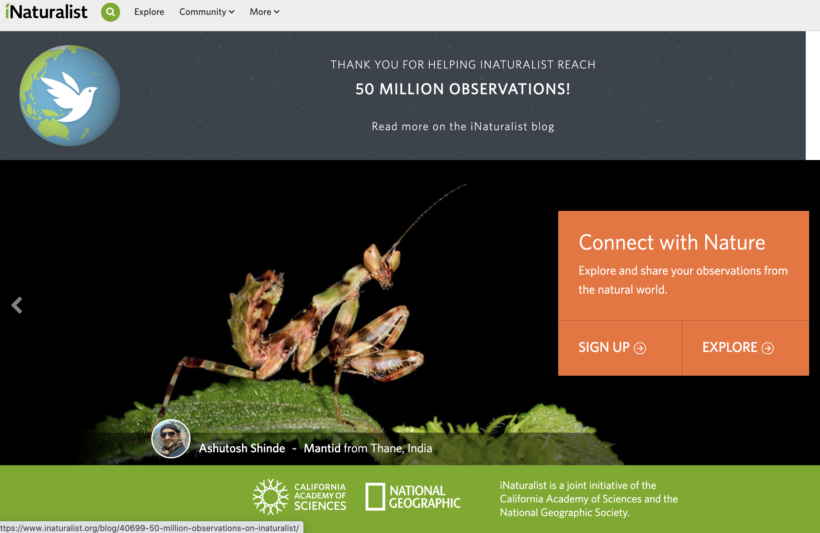
Seek is powered by iNaturalist, which is the best app I know for discovering and identifying plants and animals from your backyard to the backcountry. And not just in the countries of North America, but all over the world. With iNaturalist, you are also contributing to recording and documenting biodiversity because the data is accessible to scientists.
The iNaturalist site also offers a wealth of opportunities for connecting with others and contributing to science, from hosting and participating in bioblitzes, to tracking and maintaining your personal nature observation life list, to crowd-sourcing identifications for those hard to ID sightings.
iNaturalist is “a place where you can record what you see in nature, meet other nature lovers, and learn about the natural world. [It’s] an online social network of people sharing biodiversity information to help each other learn about nature. You can use it to record your own observations, get help with identifications, collaborate with others to collect this kind of information for a common purpose, or access the observational data collected by iNaturalist users.”
The app also works without wifi or cell coverage. It can take a little bit of patience to get up to speed on how to make the most of it, but iNaturalist richly rewards the time invested in learning how to use it. (And if you love Seek, becoming a registered iNaturalist user means you’re contributing to improving the capabilities of the companion app.)
-
Merlin
Available on iOS + Android
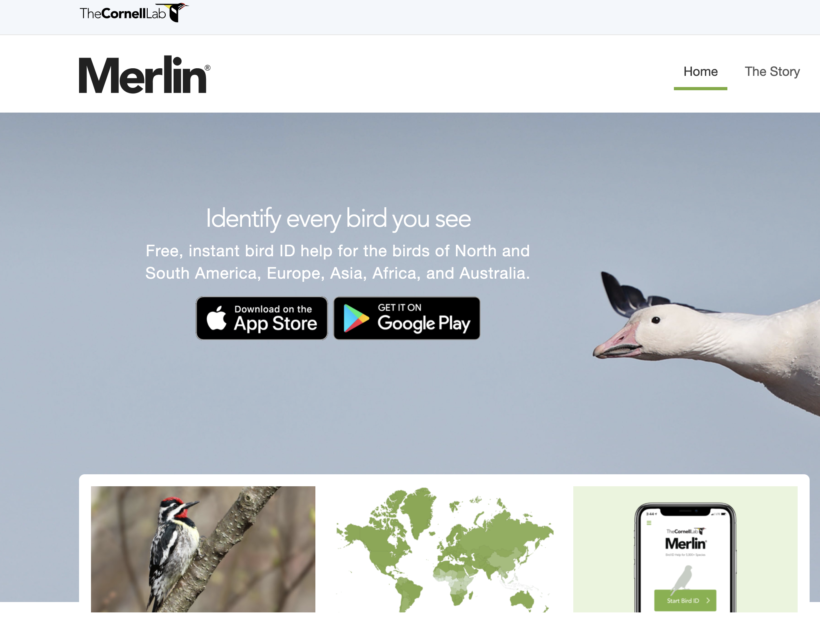
I’ve been using Merlin, from the Cornell Lab of Ornithology, since I started my journey to becoming a (moderately) competent birder in 2015. My love for the app is widely known and Merlin has only gotten better and more lovable over the years. I recommend this to anyone who will listen. Today, the app, which is free, includes “bird packs” for every continent except Antarctica. Bird packs are constantly being updated so check the “Bird Packs” screen in Merlin to see the full, most-up-to-date listing of packs.
You can also use Merlin to ID birds by picture and sound. The sound capability is amazing and has been a game-changer for my own birding development.
-
eBird
Available on iOS + Android
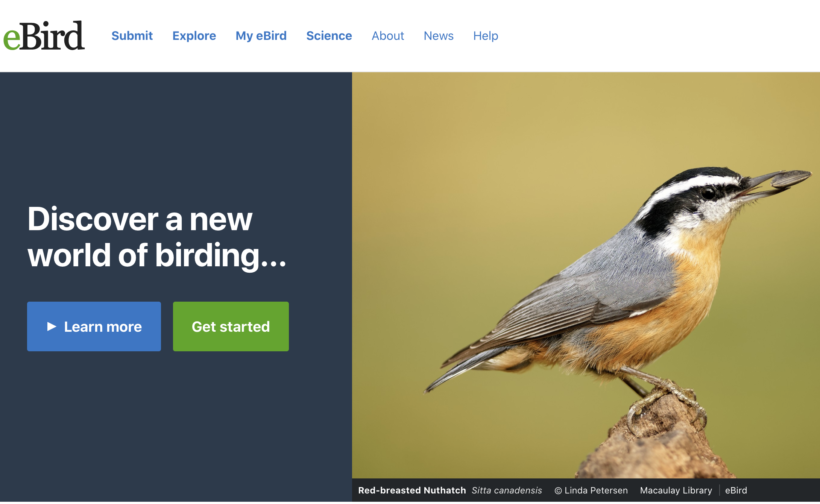
Also from the Cornell Lab of Ornithology, this is a kind of companion app to Merlin — similar to how Seek relates to iNaturalist. To use Merlin, you don’t need to create an account or otherwise register. For eBird, you will need to create an account. eBird enables birders to track their sightings in birding lists. (I confess, I’m not a listing birder in the traditional sense.)
But for people who love listing (and contributing to science), as well as a social element, eBird is a great app for all of the above. Even though I don’t keep a traditional list, I do have an eBird account so I can get the notification emails about bird sightings (especially unusual or rare species) near me. eBird also helps birders connect to each other in the “world’s largest birding community” and tracks their lists, and archives photos and recordings. All for free. Data contributed by eBird users are “a powerful resource for a wide range of scientific questions. eBird Status and Trends highlights Cornell Lab analyses of continental bird abundances, range boundaries, habitats, and trends.”
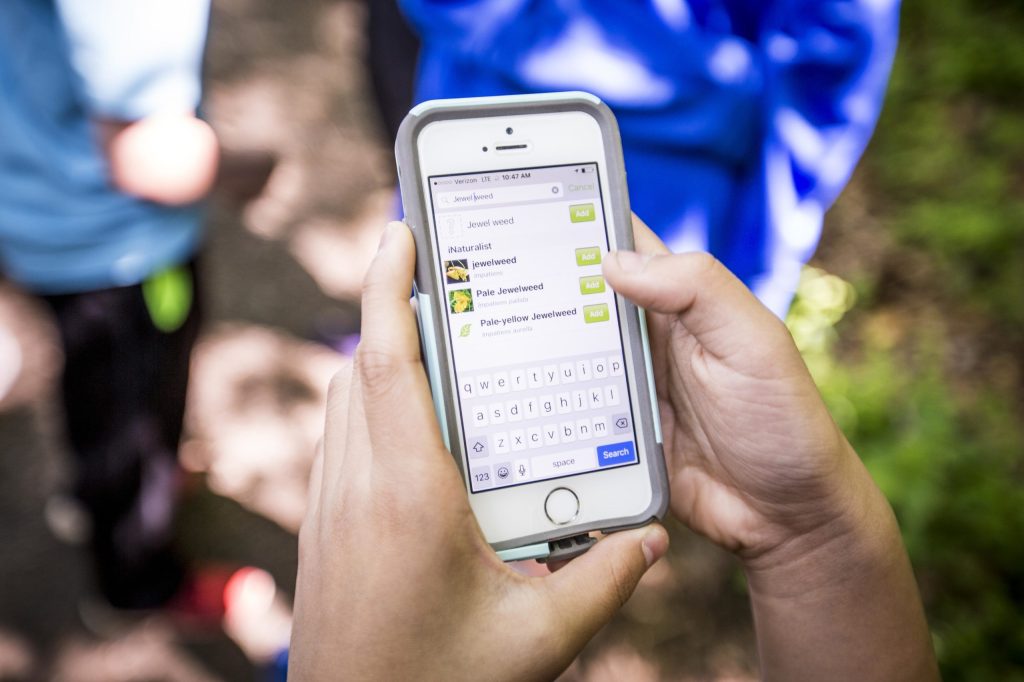



Hi! I wanted to share an amazing app for kids that not only teaches them about the environment and nature, but also provides them with tangible activities and missions they can complete in real life. It’s called the Earth Rangers app, and was created by the Canadian kids environmental organization Earth Rangers. Kids can become members for free, and unlock habitats and different wildlife along their journey!
Thanks for this information. It is good to have around for the future. I think I will copy it and save it for the future. I do have a question however.
I already have iNaturalist on my phone but I have difficulty accessing it. I never get in there so I never go there. Now that I see your article I just found out I forgot my password. I hope they email me to reset my password. I still have not received an email from them and I have refreshed it a few times already. I want to be able to use this app on my phone when I come across something I don’t know about. I see you have Twitter. I do not have Twitter. Is there any way I can get you email address so if I have these problems I can have a resource to go to and help me?? Is there an email or phone number for iNaturalist if I continue to have problems getting in?? Thanks for your time. Greatly appreciated.
Thanks. I installed Naturalist. With the green bird. I have been trying to find a password for 20 minutes but it wont let me. Any ideas?